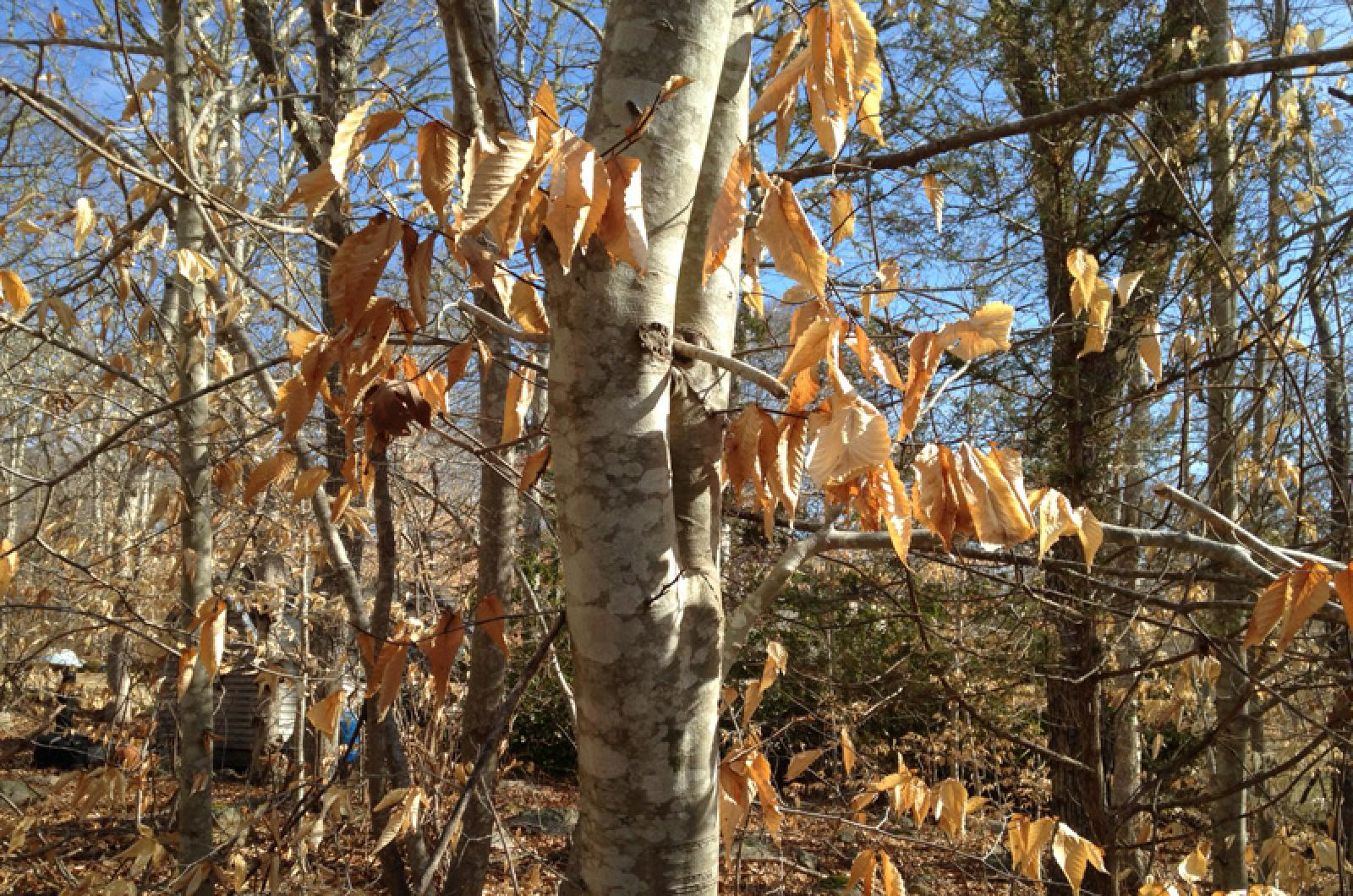Nevertheless they persisted. While this has been a winter of discontent for many of us, the leaves of the beech tree have calmly endured. Though dead and dry, beech leaves continue to remain stubbornly attached to their natal stems.
This condition, called marcescence, describes the ability of some deciduous trees to keep their withered and dead leaves until new ones emerge. This strategy is believed to benefit the tree by reducing animal browse and increasing nutrient cycling. Regardless of the reason, the shimmering beige crinkly leaves provide interest in the otherwise bare woodland.
This noteworthy characteristic is just one reason to love beech trees. Henry David Thoreau well appreciated this tree. He said he “frequently tramped eight or ten miles through the deepest snow to keep an appointment with a beech-tree.”
It is not only these remaining leaves that visually delight. The grey, wrinkly bark also speaks to me, reminiscent of elephant feet or the furrows of an elderly face. Beeches are sometimes called ghost trees because of these attributes, and their smoky color, and perhaps also because of folklore that insist that these trees speak when the moon is full.
However, while beech bark has a lot of character, it also has a weakness. It is thin and easily scarred; and, sadly, some folks take advantage of this to carve names, initials or symbols in these beautiful specimens.
Writing on beech is not a recent development. In Europe, before paper was invented, beech bark was used as writing parchment. The name, beech, is derived from the German root buch, meaning book.
A beech tree’s value extends beyond the written word or etched initials. Beech scores high for edibility. Along with the squirrels, raccoons, pheasants and wild turkeys that consume beech, people can also partake. New spring leaves are edible, as is the inner bark of this plant. In hard times, its sawdust has been added to stretch flour for bread. And, then, there are the nuts.
Beechnuts, also called beechmast, are a special treat. It takes 40 years for a beech tree to produce seeds, and 20 more before a tree is able to provide a large crop of nuts. And once the tree is old enough to produce, its output is not consistent. Production cycles on a two to eight year basis, with some years yielding very few nuts, while others offer a mast (or plentiful) supply. The nuts do contain a slight amount of a toxic compound that is removed by peeling the nut’s skin, so be careful if you do try to partake of this food.
Up-Island woodlands are the best places to see beech, as they thrive in the moister morainal soils and are part of an older successional community. Cedar Tree Neck Sanctuary is a favorite place to see these glorious trees in their large and small glory. They give hope for a coming spring.
Indeed, the most important product of the beech may not be its leaves, bark, or nuts, but the sentimental effect of its appearance — and persistence. Thomas Campbell captured this side of its appeal in his poem The Beech-Tree’s Petition:
Thrice twenty summers I have seen
The sky grow bright, the forest green;
And many a wintry wind have stood
In bloomless, fruitless solitude,
Since childhood in my pleasant bower
First spent its sweet and sportive hour;
Since youthful lovers in my shade
Their vows of truth and rapture made,
And on my trunk’s surviving frame
Carved many a long forgotten name.
Oh! by the sighs of gentle sound,
First breathed upon this sacred ground;
By all that Love has whispered here,
Or Beauty heard with ravished ear;
As Love’s own altar honour me:
Spare, woodman, spare the beechen tree!
Suzan Bellincampi is director of the Felix Neck Wildlife Sanctuary in Edgartown, and author of Martha’s Vineyard: A Field Guide to Island Nature.







Comments
Comment policy »